Point-Slope Equation of a Line
The "point-slope" form of the equation of a straight line is:
y - y1 = m(x - x1)
Using this formula, If you know:
you can find other points on the line.
What does it stand for?
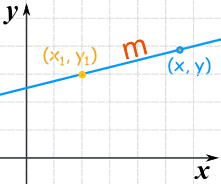 |
|
Making Sense of It
It is based on the slope:
| 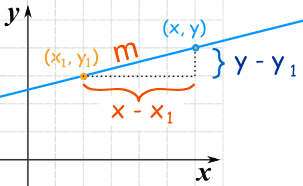 |
So this is the slope:
and we can rearrange it like this:
to get this:
| 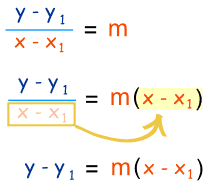 |
So, it is just the slope formula in a different way!
Now let us see how to use it.
Example 1
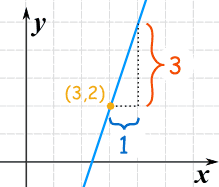
| slope "m" | = |
| = 3 |
y - y1 = m(x - x1)
We know m now, and also know that (x1, y1) = (3,2), and so we have:
y - 2 = 3(x - 3)
That is a perfectly good answer, but we can simplify it a little:
y - 2 = 3x - 9
y = 3x - 9 + 2
y = 3x - 7
Example 2
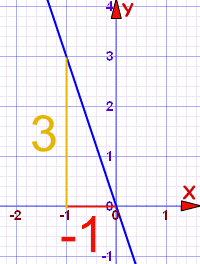
| slope "m" | = |
| = -3 |
y - y1 = m(x - x1)
We can pick any point for (x1, y1), so let's choose (0,0), and so we have:
y - 0 = -3(x - 0)
Which can be simplified to:
y = -3x
Example 3: Vertical Line
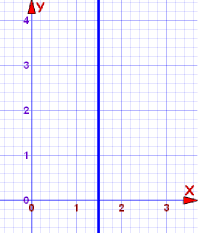 |
What is the equation for a vertical line?
The slope is undefined!
The slope is undefined!
In fact, this is a special case, and you use a different equation, like this:
x = 1.5
|
Every point on the line has x coordinate 1.5,
that’s why its equation is x = 1.5
that’s why its equation is x = 1.5
What About y = mx + b ?
You may already be familiar with the "y=mx+b" form.
It is the same equation, in a different form!
The "b" value (called the y-intercept) is where the line crosses the y-axis.
So point (x1, y1) is actually at (0, b)
and the equation becomes:
| Start with | y - y1 = m(x - x1) |
| (x1, y1) is actually (0, b): | y - b = m(x - 0) |
| Which is: | y - b = mx |
| Put b on other side: | y = mx + b |
And that is called the "slope-intercept" form of the equation of a line.